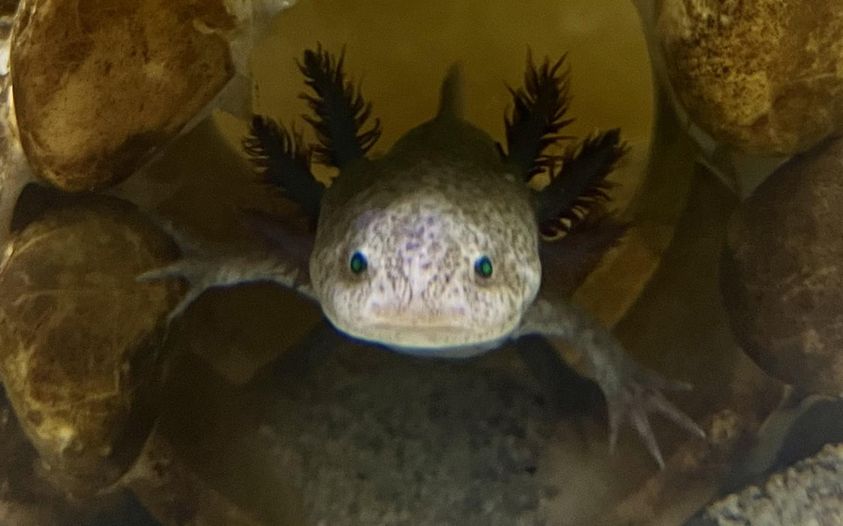Lot of ‘Lotls
Different facts about axolotls
This is one of our newest males, Starburst.
December 21, 2022
Axolotls are one of the most interesting animals. Originating from a lake in Mexico and part of the salamander family, axolotls have found themselves a place in many homes. They are easy to take care of and have a very curious nature. Once they are used to their owners, they will even swim up to the top of their tank to greet them. They live in very cold temperatures, around mid-50s or up to 68 degrees, and cannot come out of the water. Axolotls need plenty of space to swim and a few hide-outs, too, in order to live comfortably.
A few interesting facts are that they have delicate skin and are sensitive to chemical changes in their water. An amazing fact about them is that they can regenerate most of their body including parts of their brain. They also are able to force themselves to morph into a land-dwelling salamander in extreme cases when habitats are not tolerable. Axolotls also don’t physically mate; the males will drop sperm cones on the ground, and the females will come along and pick them up. The female will deposit her eggs on plants, and the female can lay up to 1500 eggs in two days after their fertilization.
Axolotls have many different morphs.
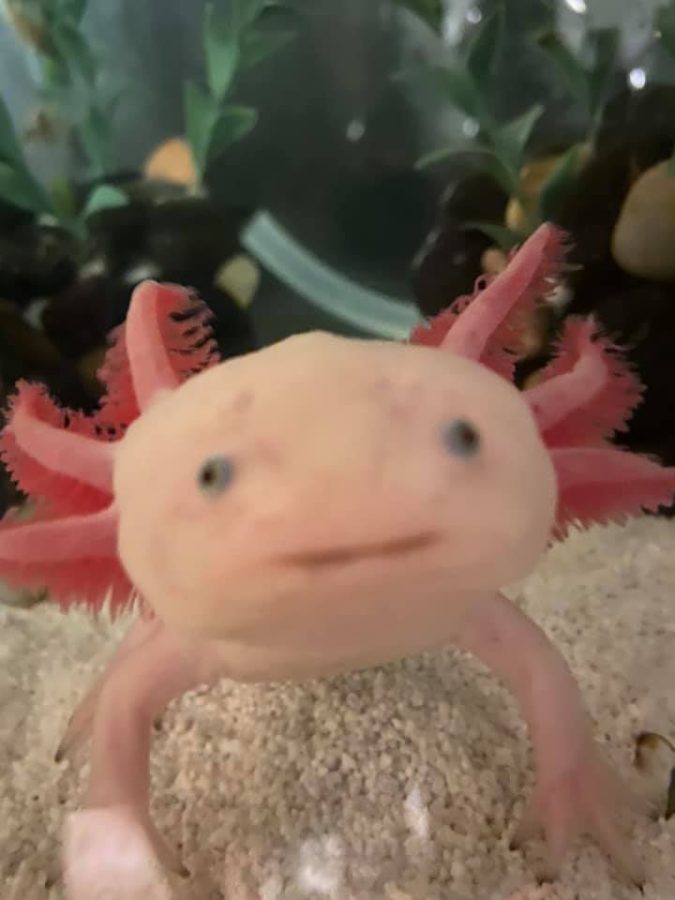
There are leucistic or lucy that have a light pink body and bright pink gills. Golden lucy morphs have a golden body with lighter golden gills and sometimes have speckles of gold throughout their bodies.
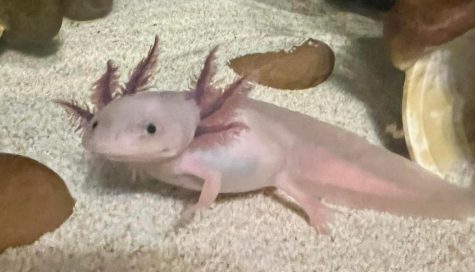
Dirty lucy morphs have pink bodies and gills with dark speckles of pigment across their bodies. Wilds have a dark or light green body with green gills and sometimes gold speckles on their bodies. Blue-gilled lucies have the same pink body and gills with a dark bluish tint on their faces and gills. Copper morphs have dark gold bodies and gills and sometimes gold speckles throughout their bodies.
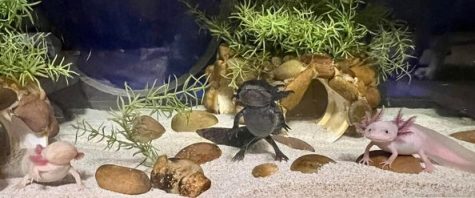
Melanoids have dark black bodies, black gills, and sometimes speckles of gold throughout their bodies. An axanthic axolotl can be any morph with no shiny pigment, and they are more velvety. Mosaic is a rare axolotl that has colors from more than one morph plastered throughout its body. Split mosaic is one of the rarest axolotls that are two different colors split down the middle; it happens when two different embryos that are in the same egg sack merge together into one axolotl. Albinos can be most morphs and have the typical clear red eyes, less pigment, and a very light-colored body. Piebald, which happens to be one of my favorites, has darker and thicker black spots, a white body, red gills, and are identical to lucy morphs. However, piebalds have black eyes and black symmetrical patches on their backs and faces.
Humans have impacted axolotls in a few different ways. The lake that they originate from used to be full of life, but now it is completely polluted and cannot support axolotls anymore.
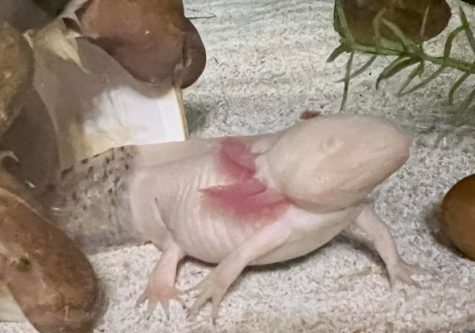
We have also requested new morphs of axolotls to be made. The firefly axolotl was created by surgically cutting off the tails of two embryos and swapping between two different eggs, and the tails will re-attach themselves to the new embryos.
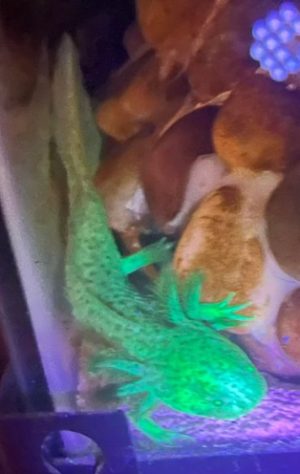
Also, scientists studying axolotls have spliced their DNA with jellyfish, which creates green fluorescent protein, also known as GFP. They glow under a black light, and it is passed on to their offspring.
Now that you have seen our family’s axolotls, think about getting one of your own!
